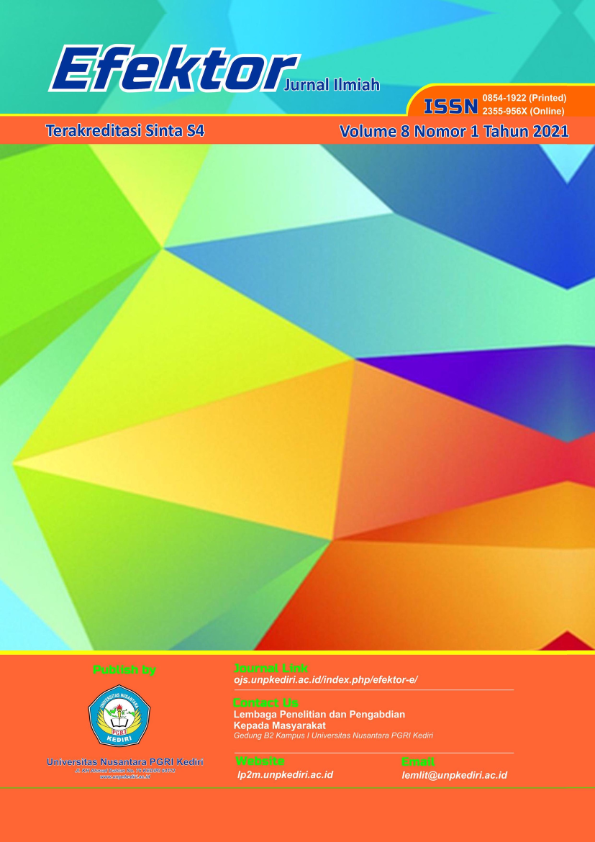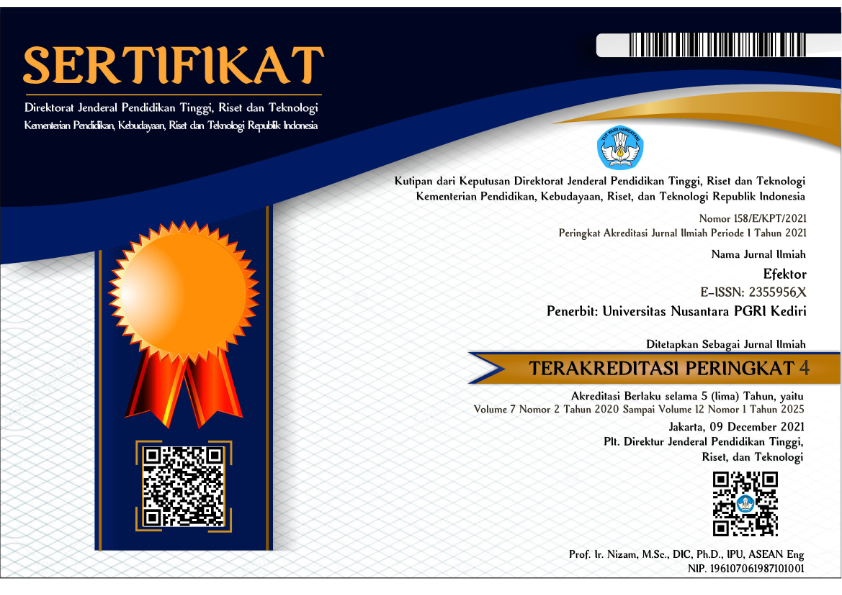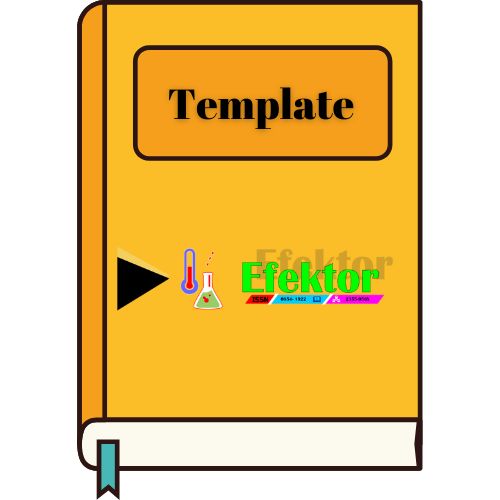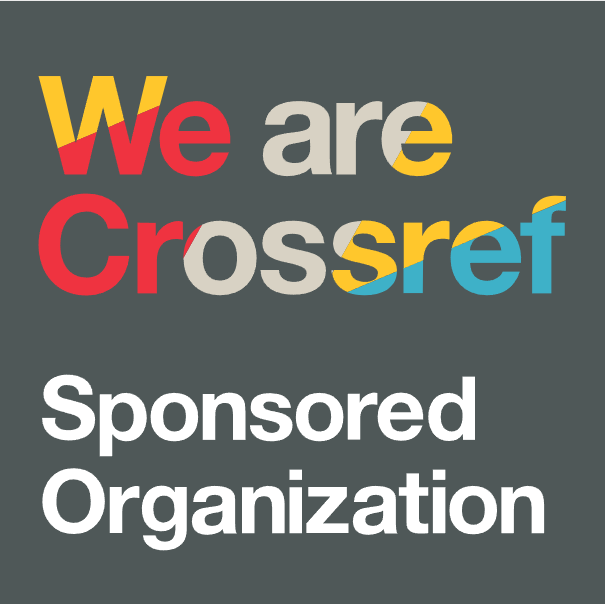Analisis Wacana Kritis Monolog Dalam Talk Show Mata Najwa Edisi "Menanti Terawan"
DOI:
https://doi.org/10.29407/e.v8i1.15481Keywords:
critical discourse analysis, monologue, mata najwaAbstract
This study aims to analyze the elements of text, interpretation, and explanation using a critical discourse analysis approach. The textual strategy focuses on choosing the right vocabulary and the use of certain grammar. The method used is the watch-free-to-talk (SBLC) method with the note-taking technique. This type of qualitative descriptive research, while the data analysis technique is carried out by referring to the framework of Fairclough's discourse analysis dimensions, namely: text analysis, namely descriptions, interpretations, and explanations that will be used as techniques in data analysis. The results obtained are as follows: first, the types of sentences used include directive, interrogative and imperative which are also strategies for text producers to show their ideology, as well as indirect assessments of participants. Second, the vocabulary used has the purpose of emphasizing, and obscuring the real meaning. In addition to the vocabulary, the textual analysis also includes grammatical aspects by utilizing transitivity, positive-negative sentences, and modalities, as well as utilizing textual structures that are in accordance with the inverted pyramid using the news text construction pattern. So that in the socio-cultural dimension there are changes in situations, changes in institutions, and social changes.
References
Badara, Aris. (2012). Analisis Wacana Teori, Metode, dan Penerapanya padaWacana Media. Jakarta: Kencana Prenada Media Group.
Eriyanto. (2001). Analisis Wacana: Pengantar Analisis Teks Media. Yogyakarta: LkiS
Fairclough, Norman. (1989). Language and Power. London and New York: Longman.
Fairclough, Norman. 1992. Discourse and Text: Linguistic and Intertextual Analysis Within Discourse Analysis. Sage Journal Vol. 3(2). 193-217. London, New Bury Park, and Delhi.
Fairclough, Norman. 1995. Critical Discourse Analysis: The Critical Study of Language. London and New York: Longman Group Limited.
Kritina, Diah. (2020). Analisis Wacana Kritis: Pengantar Praktis. Yogyakarta: Pustaka Pelajar.
Mahsun, M. S. (2014). Metode Penelitian Bahasa Metode Penelitian Bahasa: Tahapan Strategi Metode dan Tekniknya. Jakarta: Raja Grafindo Persada.
Mardikantoro, Hari Bakti. (2014). Analisis Wacana Kritis pada Tajuk (Anti) Korupsi di Surat Kabar Berbahasa Indonesia. Jurnal Litera Vol. 13, Nomor 2. Yogyakarta: FBS UNY.
Payuyasa, I. N. (2017). Analisis wacana kritis model van dijk dalam program acara mata najwa di metro tv. Segara Widya: Jurnal Hasil Penelitian Dan Pengabdian Masyarakat Institut Seni Indonesia Denpasar, 5.
Sosiowati, I Gusti Ayu Gede. (2013). “Kesantunan Bahasa Politisi dalam Talk Show di Metro TV”. Disertasi. Denpasar: Universitas Udayana.
Sumarlam, S. (2016). Representasi Kekuasaan Melalui Sabda Raja Pada Teks Berita Mengenai Konflik Internal Keraton Yogyakarta (Sebuah Analisis Wacana Kritis). Prosiding prasasti, 58-70.z
Sholikhati, NI., Mardikantoro, HB. (2017). Analisis Tekstual dalam Konstruksi Wacana Berita Korupsi di Metro TV dan NET dalam Perspektif Analisis Wacana Kritis Norman Fairclough. Seloka: Jurnal Pendidikan Bahasa dan Sastra Indonesia Vol. 6 No. 1.
Syaifudin N, Zain. (2013). “Implikatur dan Kesantunan Positif Tuturan Jokowi dalam Talk Show Mata Najwa dan Implementainya Sebagai Bahan Ajar Bahasa Indonesia di SMK”. Jurnal Penelitian Humaniora, Vol 14 No. 1 hlm 55-70. Surakarta: Universitas Muhammadiyah Surakarta.
Widyawari, Zulaeha. (2016). Representasi Ideologi dalam Tuturan Santun Para Pejabat Negara pada Talk Show Mata Najwa. Seloka: Jurnal Pendidikan Bahasa dan Sastra Indonesia Vol. 5 No. 1.
Wibowo, Setiawan Edi. (2013). “Kesantunan Humor Pejabat dalam Wawancara: Kajian Pragmatik (Studi Kasus Pembelajaran di Kelas”. Litera, Vol 13, No 1, April. Yogyakarta: UNY.
Downloads
Published
Issue
Section
License
Authors who publish with this journal agree to the following terms:
- Copyright on any article is retained by the author(s).
- The author grants the journal, the right of first publication with the work simultaneously licensed under a Creative Commons Attribution License that allows others to share the work with an acknowledgment of the work’s authorship and initial publication in this journal.
- Authors are able to enter into separate, additional contractual arrangements for the non-exclusive distribution of the journal’s published version of the work (e.g., post it to an institutional repository or publish it in a book), with an acknowledgment of its initial publication in this journal.
- Authors are permitted and encouraged to post their work online (e.g., in institutional repositories or on their website) prior to and during the submission process, as it can lead to productive exchanges, as well as earlier and greater citation of published work.
- The article and any associated published material is distributed under the Creative Commons Attribution-ShareAlike 4.0 International License













